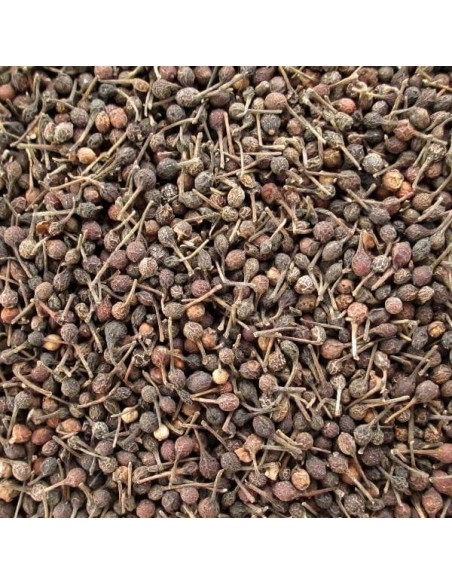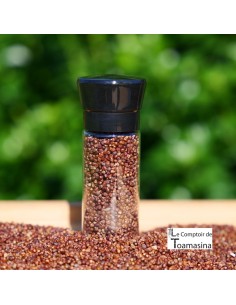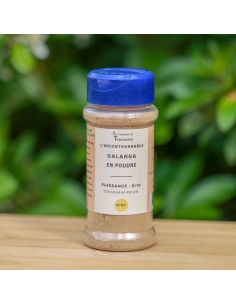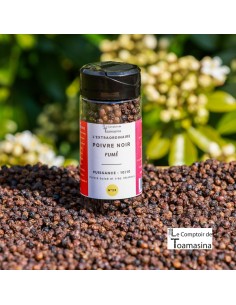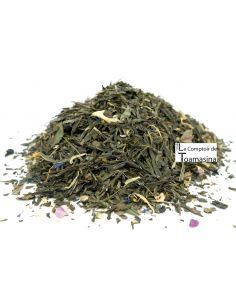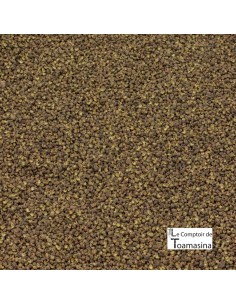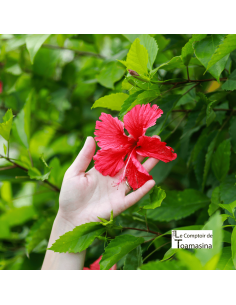But what is wild pepper from Madagascar? It is known as Voatsiperifery Pepper, Tsiperifery . It is a grain that is unique . In Madagascar, you find the normal, very aromatic quality and the petit grain which is sold 40% less expensive than the normal voatsiperifery black pepper grain .
Voatsiperifery , better known as wild Madagascar pepper , is a spice that embodies the very essence of the island, just like vanilla. Its unique character and culinary use make it a taste experience sought after by fans around the world. In Brazil, at each restaurant I visit he asks me how to buy your pepper, pepper producer friends ask me if it is possible to produce this pepper in Bahia, I always answer them, Bahia has the same climate and above all the same vegetation as the communities of villagers who grow or harvest this spice. But it is difficult to import the plant and since 2020 there is a project to cut this spice.
It is a berry which originates from the humid forests of Madagascar, the voatsiperifery is distinguished by its small round or ovoid berries, with a small tail.
This tropical vine which can climb up to 20 meters high. To find out how it grows, we advise you to read our article how vanilla grows , because this pepper originally from Madagascar shares the same story for making cuttings.
Its name, taken from the Malagasy language, evokes both its fruit and its traditional healing properties.
Belonging to the Piperaceae family, this spice shares botanical links with black pepper , although it was formerly associated with the Piper borbonense of Reunion Island. Despite its culinary and cultural importance, voatsiperifery remains without an official scientific designation to this day.
And the name pepper is a tolerance left by the French administration because according to a decree of 1945, only piper nigrum can have the name pepper. Timut pepper should be called timut berry.
The first written references to this vine date back to colonial times, where it was used for medicinal purposes, but also for spiritual and cultural rituals by local populations.
My own fascination with this spice dates back to 2010, when I discovered voatsiperifery pepper during a trip between Tamatave and Antananarivo. This discovery sparked in me the desire to share this unique experience with the world. Because in the big trees where the liana grows I saw a spice like vanilla, an extraordinary tailed pepper.
I can tell you that if you travel to Madagascar, take the time to talk with the village communities about this pepper, on the road between Tamatave and Antananarivo. They will explain to you the complexity of the harvest which is done by hand, but also how to produce it and finally the Malagasy village communities and certain unscrupulous producers who will uproot the vines.
Therefore, the growing popularity of this spice has also led to major challenges, including the overexploitation of resources and the destruction of the plant's natural habitat. Interdisciplinary research initiatives have been launched to better understand the biology, ecology and distribution of voatsiperifery, as well as to develop sustainable cultivation and processing practices.
You should know that it is a pepper that needs biodiversity to have a good yield. Read our article on biodiversity. And above all, buy our açai powder which comes from a reforestation project in the Amazon.
Despite significant progress in plant multiplication and forest conservation, the road to sustainable exploitation of wild pepper remains long. Additional efforts are needed to regulate harvesting, promote conservation of natural habitat and ensure fair economic benefits for local communities.
The voatsiperifery therefore remains not only a culinary treasure, but also a symbol of the natural wealth of Madagascar and the need to preserve its biodiversity for future generations.


